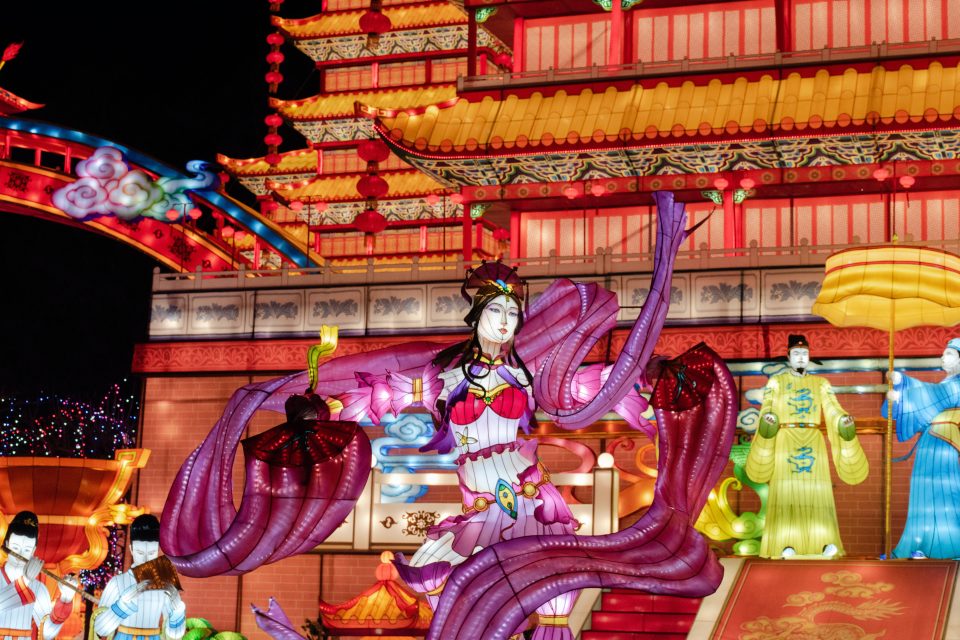Just around the corner, the Chinese will commemorate their Chinese New Year globally.
They believe the Chinese New Year symbolises the struggle and victory of religious life. Further, it signifies brotherhood between the people of Ji Kau/Ru Jiao, Hud Kau/Fo Jiao, and Too Kau/Dao Jiao. Attempts to knit brotherhood and tolerant behaviour among Chinese descendants can be seen clearly during the practice of worship on the Altar of Heaven (Tien-tan) of Tri Dharma Temple. Their beautiful and serene difference in belief (Buddhism, Taoism, and Confucianism) is the basic resource for building a better life.
Unlike the celebration of the Gregorian New Year, the first days of the Chinese New Year have special meanings. The first day is considered sacred because all family members gather. On the second day, the old god image would be taken down and burned, with the new being installed along with prayers and firecrackers burning. Later, people pray before an offering table. On the sixth day, all businesspeople and shop owners get up to worship all the gods and burn the evil fairy on the yellow paper by lighting incense and firecrackers. When the firecrackers burn out, the shop door would be opened and the business starts again.
Livestock and produces also receive great attention in this celebration. The first ten days are used to celebrate the pets’ birthdays. If the weather is good, it means a good year for animals and plants. Prior to the Chinese New Year celebration, there is a tradition of cleaning the house which is believed to bring good luck in entering the new year. Sweeping the house should be avoided, especially during the first three days, since otherwise upcoming good luck would be swept out.
During the celebration time, cutting tools such as knives or scissors should not be used. That’s why all the party food is made and prepared the day before. There is a tradition to give the gift of a bright, beautiful red envelope (known as angpao) to friends and family. But not just any old envelope. These are filled with money and symbolise good wishes and luck for the new year ahead.
The first coming of Chinese to the archipelago remains unknown. Historians have yet to agree. According to Henry Basuki (2008), I Tsing was the first Chinese that came to the archipelago based on what was written in Batutulis inscription, West Java, 414 AD. It is said that the arrival of I Tsing was long before King Siliwangi left the slate inscription and he paid the Kingdom of Pajajaran a visit twice.
Adib Susila (2008) wrote that Chinese Muslim preachers started preaching Islam in Java in the 14th century. In the da’wah (religious outreach) process, the take-and-give approach paved the way for cultural acculturation. It has been beautifully recorded in several ancient mosques in Jakarta, Banten, Semarang, Jepara, Demak, and so on. This has also been recorded on the door of the tomb of Sunan Giri in Gresik, the architecture of the palace and gardens of Sunyaragi Cirebon, and so on. Unfortunately, certain parties are not in favour of these historical facts and highlight the preachers spreading Islam from Arabia and India instead.
A group of Chinese who attained the archipelago in general and Java, in particular, turned out to be not only traders but also writers, artists, and musicians. They prompted the cultural acculturation marked by the production of various quality works of art—literature, wayang (shadow puppets) music. Chinese-Javanese literary works written from 1880 to 1900s have been scattered in various libraries in Depok, Jakarta, Solo, Yogyakarta, Leiden, and Berlin.
Regarding musical instruments, the acculturation gives birth to rebab and drum easily found among various ethnic groups across the archipelago. In Betawi, Gambang Kromong is a musical instrument that combines Betawinese culture through Gambang and Kromong (it is called bonang in Java) and the fiddle from China. Beduk, present in many mosques in Indonesia, originated in China.
For political reasons, on 6th December 1967, Soeharto’s New Order government issued Presidential Instruction (Inpres) No. 14/1967, which banned the presence and dissemination of culture smacking of China in Indonesia. The New Order’s narrative at that time was that the PKI (the Indonesian Communist Party) was backed by the communist Chinese government, and during the Cold War period, it was clear that Soeharto’s regime opted to side with the United States to fight the growing influence of communism in Southeast Asia.
After decades of official discrimination, Chinese-Indonesians were then allowed to celebrate Imlek (Chines New Year) openly, thanks to our former president, the late Abdurrahman Wahid (Gus Dur), who in 2001 lifted the ban on Chinese cultural and linguistic expression in Indonesia. Let the celebration of Chinese New Year be part of Indonesian culture and tradition, to bring about natural acculturation. The festival is indeed the time to celebrate Indonesia’s diversity.




